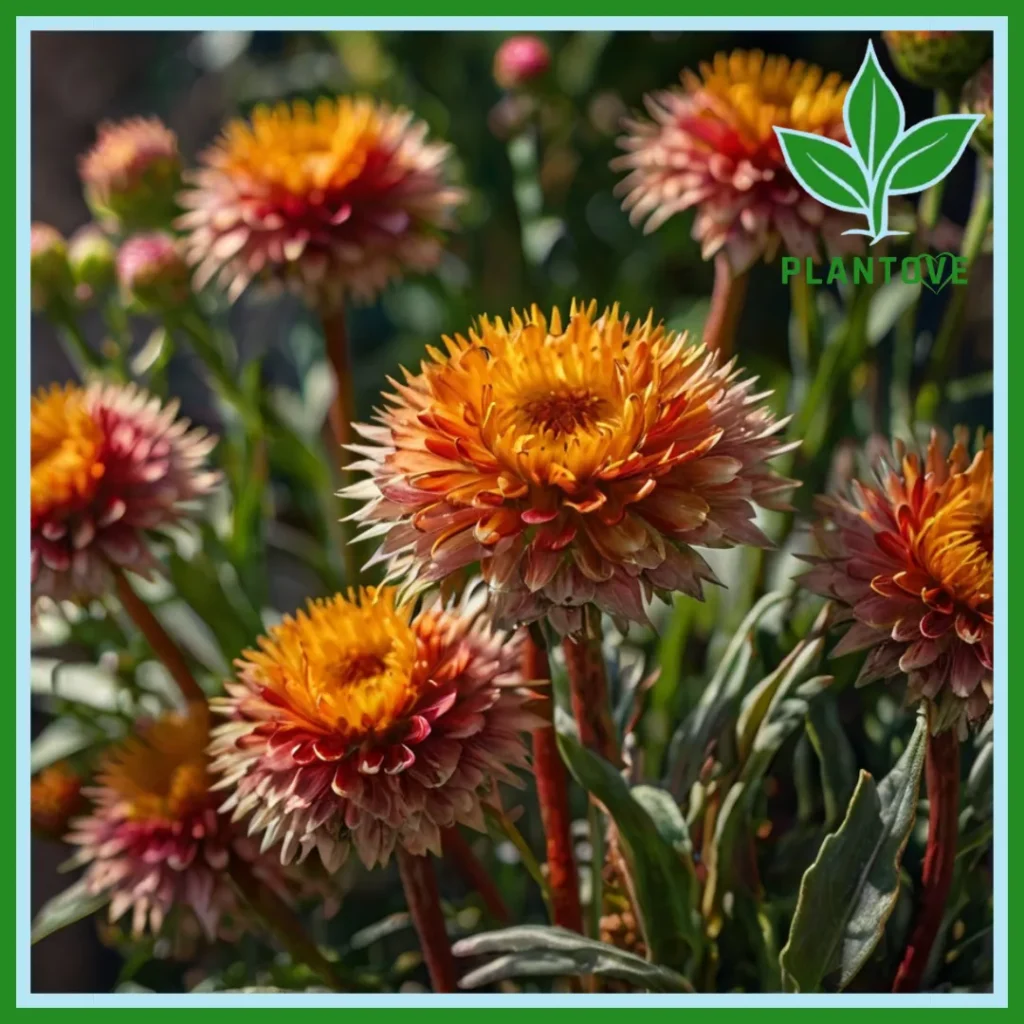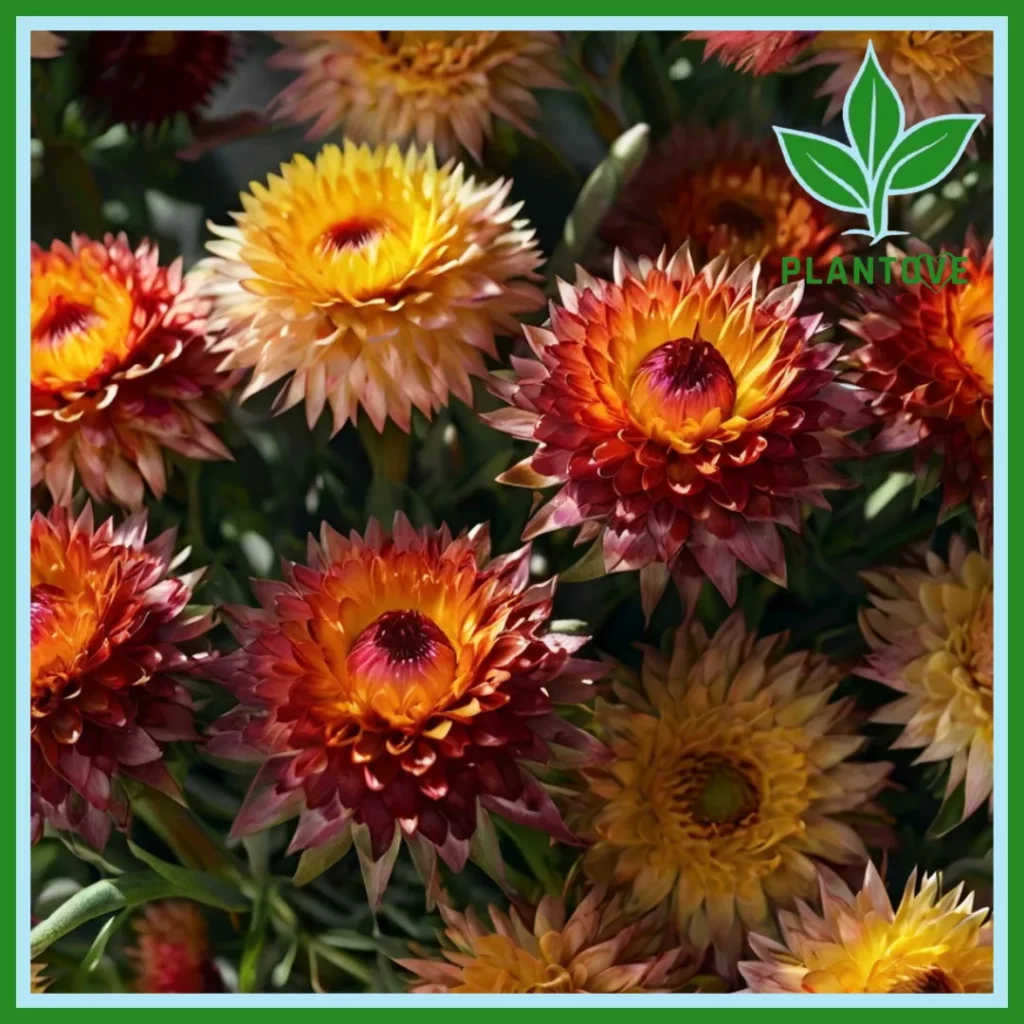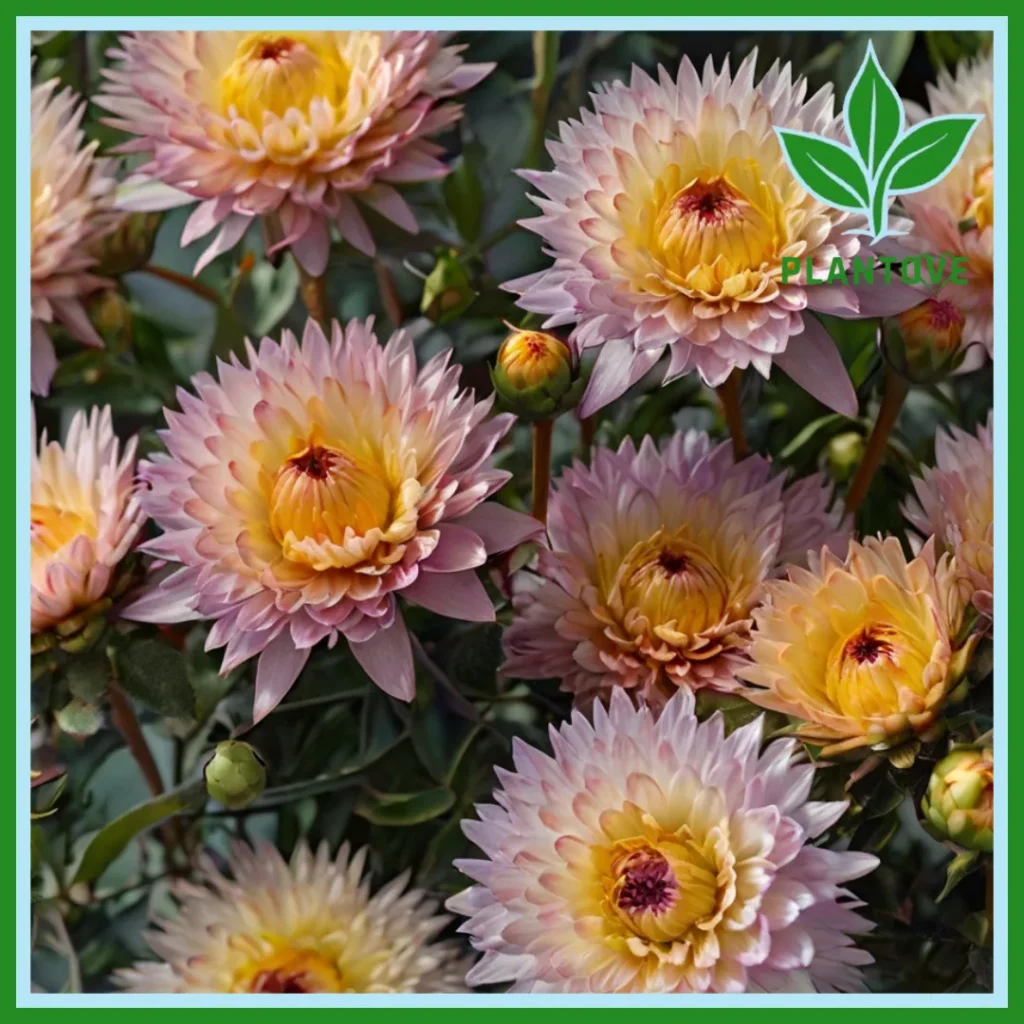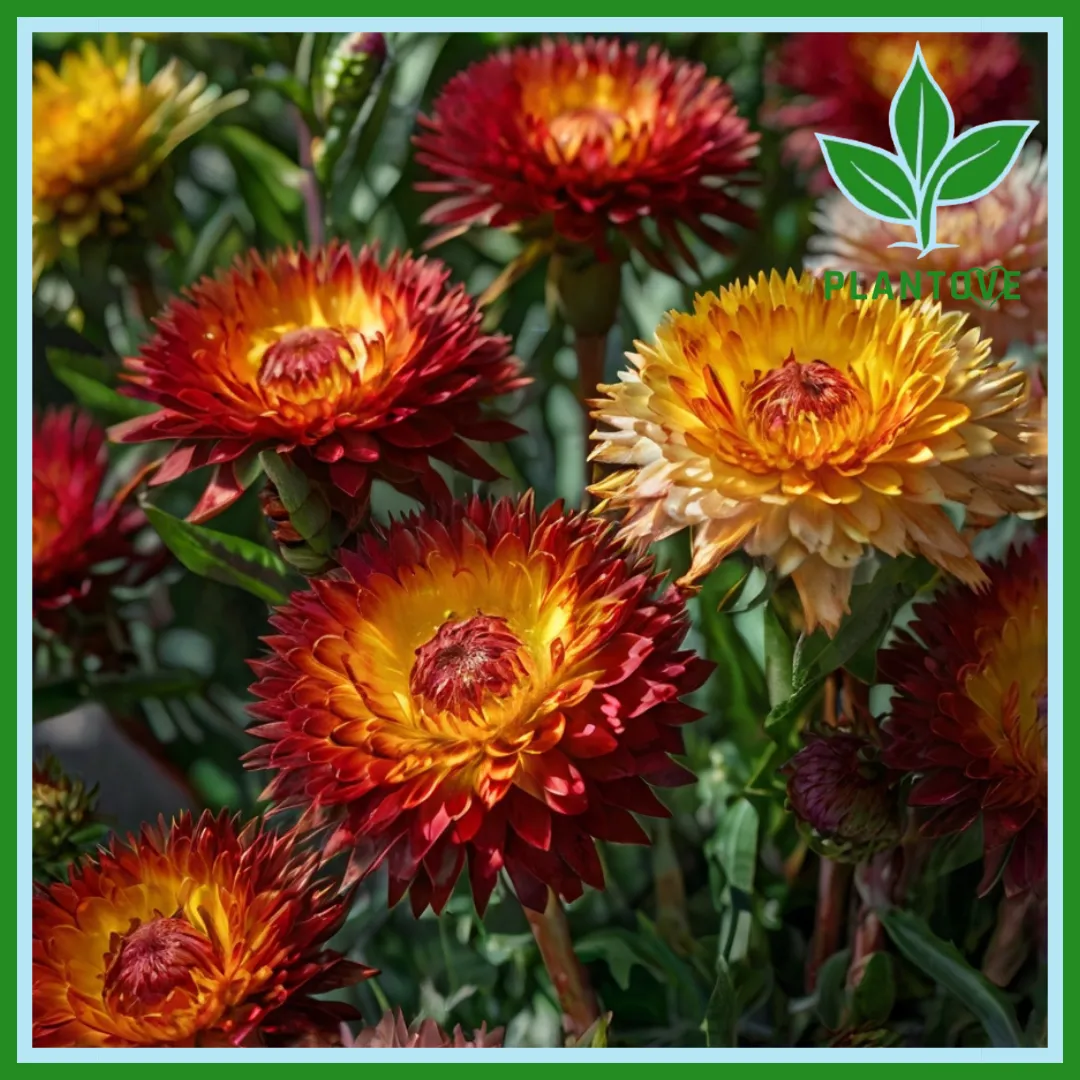Strawflower, scientifically known as Xerochrysum bracteatum, are a unique and hardy flowering plant that can bring lasting color to any garden or indoor space. Known for their papery petals and wide range of bright colors, strawflowers are drought-tolerant and exceptionally low-maintenance, making them a popular choice among gardeners in the USA. This article will provide insights into everything you need to know about growing strawflowers, including care tips, propagation, and common varieties.
What Are Strawflowers?
Strawflower belong to the Asteraceae family and are native to Australia. Their unique texture, which feels almost paper-like, makes them particularly useful for dried floral arrangements, as their appearance remains vibrant even after drying. These blooms are available in a range of colors, including yellow, orange, pink, red, and white, often with a contrasting yellow center.
Benefits of Growing Strawflower
Strawflowers are easy to grow and add vibrant color to any setting. Beyond their visual appeal, they attract pollinators like butterflies and bees, making them beneficial for biodiversity. Their drought resistance also makes them ideal for regions with low rainfall, and their lasting blooms make them a great choice for dried bouquets and crafts.
Growing Strawflowers in Pots
Growing strawflowers in pots is a great option, especially for gardeners with limited outdoor space. To grow them in containers:
- Choose a pot that is at least 8-10 inches in diameter to allow room for growth.
- Use a well-draining potting mix; strawflowers do not do well in soggy soil.
- Ensure the pot has drainage holes to prevent root rot.
- Place the pot in an area that receives 6-8 hours of direct sunlight each day.
Water moderately, allowing the soil to dry out slightly between waterings. Potted strawflowers benefit from a balanced liquid fertilizer once a month during their growing season.
Strawflower Plant Care

Strawflowers are generally low-maintenance, but providing them with the right care will ensure a healthy, vibrant display.
- Sunlight: Strawflowers love sunlight, so plant them in a sunny location with full exposure, ideally for 6-8 hours a day. They perform best in bright conditions and tolerate high heat, making them well-suited for many parts of the USA.
- Soil: Well-drained, sandy or loamy soil works best. While they are adaptable to various soil types, overly wet or clay-heavy soil may lead to root rot.
- Watering: Strawflowers are drought-tolerant, but they still require regular watering, especially when young. Water deeply once a week or more often during periods of extreme heat. Avoid overhead watering to prevent fungal growth on the leaves.
- Fertilization: These plants aren’t heavy feeders, but a light application of a balanced fertilizer during the growing season can encourage strong blooms.
- Deadheading: Removing spent flowers encourages more blooms and keeps the plant looking neat. Deadheading also prevents self-seeding if you don’t want the plant to spread in your garden.
Do Strawflowers Self-Seed?
Yes, strawflowers can self-seed, meaning that they may naturally reseed themselves in your garden if conditions are favorable. After the flowers fade, they produce seeds that may scatter and germinate in the same area the following season. This characteristic can be useful if you want a continuous display without having to replant each year. However, if you prefer more control over where the plants grow, it’s best to deadhead spent blooms before they set seed.
Strawflower Varieties

There are several stunning varieties of strawflowers, each offering unique colors and sizes. Some popular options include:
- Bright Bikini Mix: Known for a vibrant mix of colors, this variety is great for adding diversity to flower beds or containers.
- Monstrosum Mix: Characterized by larger blooms and vivid colors, this variety is especially popular for both garden beds and dried floral arrangements.
- Dwarf Strawflowers: Ideal for containers or small spaces, dwarf varieties grow to about 12 inches and offer the same brilliant colors as their taller counterparts.
- Sundaze Golden Beauty: This variety is known for its intense yellow-gold flowers that retain color exceptionally well, making it perfect for dried arrangements.
Propagation of Strawflowers
The most common way to propagate strawflowers is from seeds, as this is an easy and effective method.
- Starting Seeds Indoors: To get an early start, sow seeds indoors 6-8 weeks before the last expected frost. Scatter seeds over the soil and lightly press them down without covering, as they need light to germinate. Place the tray in a warm, sunny spot or under grow lights. Seeds typically germinate in 1-2 weeks.
- Direct Sowing Outdoors: After the danger of frost has passed, you can sow seeds directly in the garden. Scatter them over a prepared bed with well-draining soil, lightly pressing them into the soil without covering. Water gently.
- Transplanting: If you started seeds indoors, transplant seedlings into the garden or pots once they’re about 2-3 inches tall and after the last frost.
Common Strawflower Problems and Solutions
Strawflowers are generally hardy and resilient, but they can encounter a few common issues.
- Powdery Mildew: This fungal disease appears as white powdery spots on leaves. To prevent it, ensure good airflow around the plants and avoid overhead watering. If it occurs, remove affected leaves and consider using a fungicide.
- Aphids: These small insects can damage plants by sucking sap from leaves and stems. Treat infestations by rinsing the plant with water or using insecticidal soap.
- Root Rot: Overwatering or poor soil drainage can lead to root rot. Ensure the soil is well-draining, and only water when the top inch of soil is dry.
FAQs about Strawflowers

1. Can Strawflowers Grow Indoors?
Yes, strawflowers can be grown indoors if they receive plenty of sunlight. Place them near a sunny window or use grow lights to ensure they get the light they need.
2. Do Strawflowers Come Back Every Year?
In warm climates (zones 8-11), strawflowers may grow as short-lived perennials. However, in most regions, they are grown as annuals due to their sensitivity to frost.
3. How Tall Do Strawflowers Grow?
Depending on the variety, strawflowers can reach heights between 12 inches (dwarf varieties) and 36 inches, making them versatile for different garden spaces.
4. Can Strawflowers Tolerate Cold Weather?
Strawflowers are not frost-tolerant. They thrive in warm weather and may suffer in temperatures below 40°F. In colder regions, they’re best planted after the last frost.
5. Are Strawflowers Good for Drying?
Yes! Strawflowers retain their shape and color exceptionally well when dried, making them ideal for dried flower arrangements. Simply cut the blooms, remove the leaves, and hang them upside down in a cool, dry place until fully dried.
6. Are Strawflowers Edible?
While strawflowers are non-toxic, they are not commonly used as edible flowers due to their tough, papery texture. However, they are safe to grow around children and pets and add a visually appealing touch to gardens or arrangements.
Conclusion
Strawflowers are a versatile and colorful addition to any garden or indoor setup. With their stunning appearance, low maintenance needs, and drought tolerance, they are perfect for gardeners of all skill levels. Whether you’re planting them in pots or garden beds, strawflowers provide long-lasting color and charm that can extend into the colder months through dried arrangements. By following the tips in this guide, you’ll be well on your way to successfully growing and enjoying these unique and beautiful flowers in your own space.

